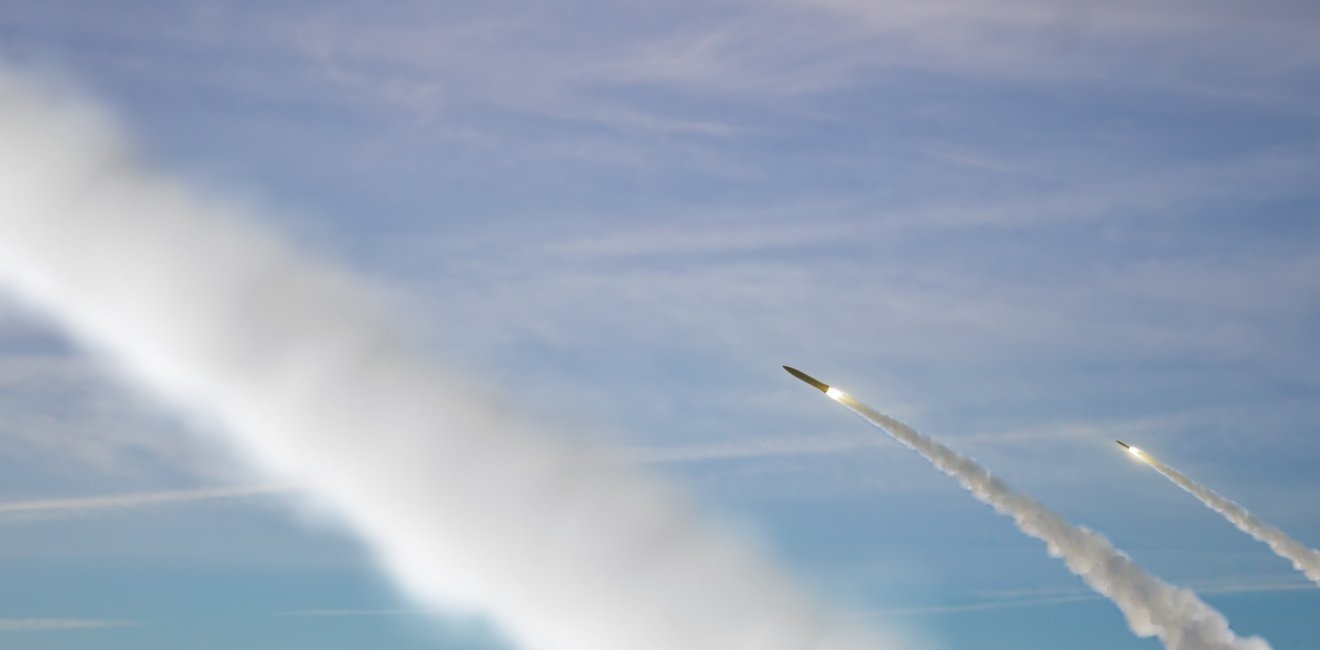
A blog of the Kennan Institute
Around the time of the summer solstice this past June, Ukrainian composer Roman Hryhoriv stepped before a string chamber orchestra and played an instrument that had never been heard in concert before: a Russian Uragan missile. More precisely, Hryhoriv drew his bow across the exposed inner skeleton of a Russian missile that had fallen on Ukraine. The new instrument emitted a high-pitched, haunting, metallic sound that the composer transformed into a funereal melody surrounded by mellower strings. The premier of his Concertino for MRLS BM-27 Uragan Missile and Chamber Orchestra, titled “Hell’s Arrow Voice” and performed in Kyiv’s St. Andrew’s Church, lasted six minutes.
As reported previously in this blog (June 2, 2023), Hryhoriv and his frequent collaborator Illia Razumaiko are among Ukraine’s most recognized contemporary composers, having taken the European music scene by storm with their opera Chernobyldorf.
Hryhoriv is originally from Ivano-Frankivsk and has been living in Kyiv for decades. He studied in Vienna, where he collaborated with musicians who are reinventing musicianship by composing and performing works on non-traditional instruments. The quarter-century old Viennese Vegetable Orchestra, for example, plays concerts entirely on fresh veggies. These efforts are known for their high level of musicianship, far from carnival diversions and sideshow performances.
Hryhoriv has extended this spirit of innovation to include the machinery of war, and St. Andrew’s Cathedral is a fitting spot for a recital featuring a Russian missile. Rastrelli’s Baroque confection has been a beloved chamber music concert venue for years, known for its enveloping charm and warm sound. Built in the mid-18th century by Italian architect Bartolomeo Rastrelli, the sanctuary perches picturesquely on a high hill overlooking Kyiv’s lower city Podil.
Rastrelli even more famously designed the Winter Palace in St. Petersburg and the Catherine Palace in nearby Tsarskoe Selo for Empress Elizabeth (the daughter of Peter the Great). These works glorified the growing power of a Russian empire expanding in several directions.
Kyiv’s church, consecrated to honor Andrew the Apostle—said to have brought Christianity to Rus lands when he planted a cross on this spot during the first century—offers deep imagery. It echoes the architect’s Smolnyi Cathedral in St. Petersburg, which was completed later. The Kyiv church exudes baroque appeal, while its northern sister signals imperial intent. St. Andrew’s is inseparable from the Russian imperial project in Ukraine, a meaning which amplifies Hryhoriv’s message about the current war.
Hryhoriv’s performance reclaims music from the Russian attack. Former Deputy Minister of Internal Affairs of Ukraine Anton Gerashchenko underscored the pathos and even sly humor of Hryhoriv’s performance when he told his Twitter followers, “The Russians took a name of a great composer, Richard Wagner, and turned it into a synonym [of] sadism and murder. The Wagner mercenaries call themselves ‘musicians.’ Ukrainian composer Roman Grygoriv took a missile, a deadly weapon, and turned it into a musical instrument.”
Ukrainians working in many different genres are converting the detritus of war into artistic expression (see blog posts from June 16 and July 14). In doing so, they convert anger and pain into a source of beauty and a symbol of retribution. Their creative acts constitute a purification of the damage unleashed by Russian weapons on Ukraine. They reveal how creative energy can point to salvation in the face of what can only be considered vile. Their responses expose Ukrainian invincibility that has surprised many. They also point to new possibilities for Ukrainian culture once the war has ended.
The opinions expressed in this article are those solely of the author and do not reflect the views of the Kennan Institute.
Author

Former Wilson Center Vice President for Programs (2014-2017); Director of the Comparative Urban Studies Program/Urban Sustainability Laboratory (1992-2017); Director of the Kennan Institute for Advanced Russian Studies (1989-2012) and Director of the Program on Global Sustainability and Resilience (2012-2014)

Kennan Institute
After more than 50 years as a vital part of the Wilson Center legacy, the Kennan Institute has become an independent think tank. You can find the current website for the Kennan Institute at kennaninstitute.org. Please look for future announcements about partnership activities between the Wilson Center and the Kennan Institute at Wilson Center Press Room. The Kennan Institute is the premier US center for advanced research on Eurasia and the oldest and largest regional program at the Woodrow Wilson International Center for Scholars. The Kennan Institute is committed to improving American understanding of Russia, Ukraine, Central Asia, the South Caucasus, and the surrounding region through research and exchange. Read more

Explore More in Focus Ukraine
Browse Focus Ukraine
Talking to the Dead to Heal the Living

Ukrainian Issue in Polish Elections


